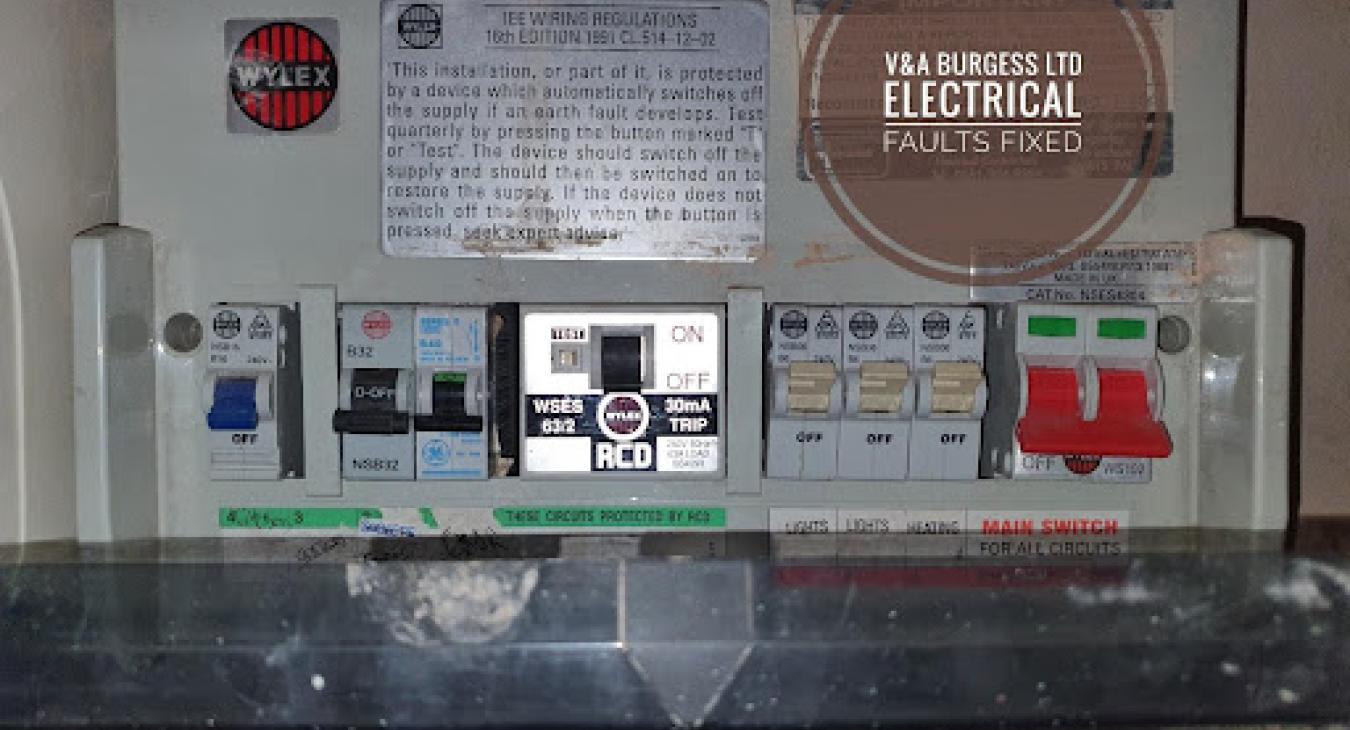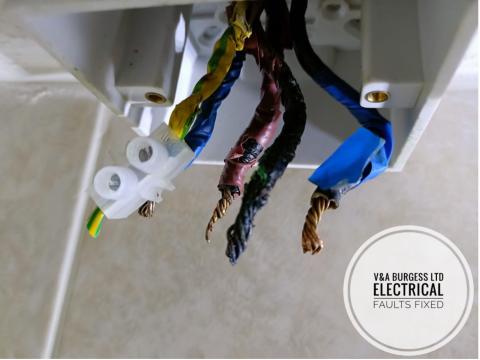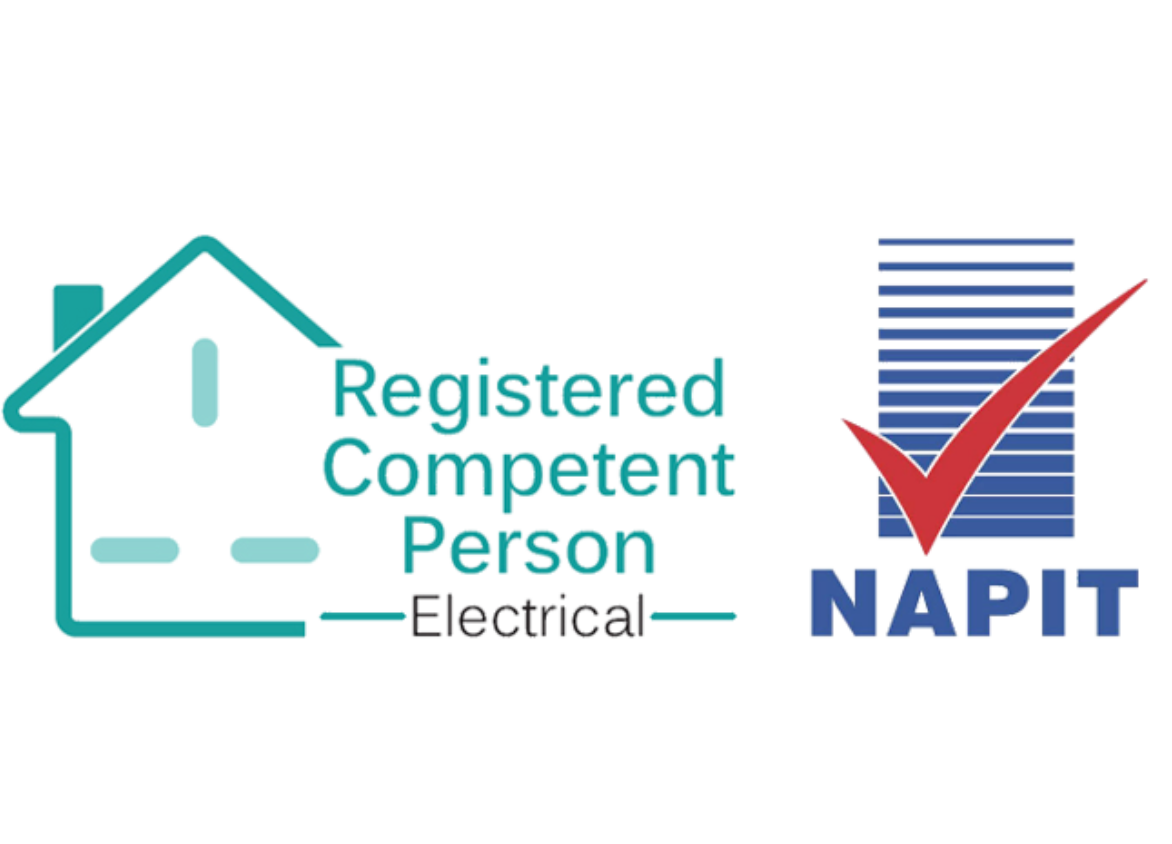
Table of Contents
1) Consumer units: What are they? What do they do?🤔
We simply cannot function without electricity in our modern world. Electricity powers everything inside and outside of our homes and all around us even petrol- and diesel-powered vehicles require electricity in order to correctly ignite fuel and propel us and our goods along the roads. We rarely question the way in which electricity works, its functions, how this invisible force performs everything we ask it to and yet it remains safe, inside our walls in our homes all around us.
Back to top2) What is a consumer unit? Read on & find out...💭
In our homes electricity is delivered to us through cables in the street either overhead or underground and then enters our homes into a mysterious looking grey or black box and onwards to the electric meter and then beyond into the consumer unit.
Back to top3) What is a consumer unit?🔎
The consumer unit is the box that splits up our electricity supply into different areas of the home. The incoming electricity supply comes from the electric meter into this plastic or metal box and is then divided into electrical circuits. Each circuit has a particular function in the home for instance, sockets, lights, cooker, car charger and so on. It is necessary to split the electrical installation up into circuits in order to maximise safety and minimise inconvenience in the event of an electrical fault. It would simply be no good if a light bulb blew and the entire property lost all power to everything! 😊
The consumer unit is not only responsible for dividing the electrical installation into different circuits and sending power around the home but it also plays an absolutely vital role in keeping us safe. It does this through the use of its various components. The more modern the consumer unit, generally the better it performs at keeping us safe and sound in our homes. Older units tend to offer less protection against things such as electrical fires, arcing and sparking, electric shock and overload.
Back to top4) What are the parts of the consumer unit and what do they do❔
Consumer units are made of several components working in harmony to keep the electricity flowing. Each of these components performs a specific task.
- Main Switch: This device is responsible for isolating all the electricity in your home. In an emergency, the main switch can be turned off and all power to all circuits will be shut down. It is a safety measure and a useful switch for electricians planning on carrying out electrical work on installations to ensure work can be carried out safely. It is often best to have an external switch on the incoming meter cables such that the consumer unit can be completely made dead from the electrical supply. Some installations also have a separate “isolator” or “main switch” on the meter cables themselves.
- Residual Current Devices: These devices are responsible for monitoring electrical current flow around the electrical circuits which they protect. They are not designed to trip off if too many appliances are being used but rather if they detect that some electrical current is missing from one of the electrical circuits. The assumption being is that, if there is some electrical current missing that it is travelling through someone giving them a shock. Once the RCD device detects this missing current it will very quickly, turn the electrical supply off to the circuits which it protects. These devices are highly sensitive and can also offer some fire protection, cable protection and water ingress protection.
- Circuit Breakers, MCB or RCBO devices: These devices protect the cable in the electrical circuits from prolonged overload such as when too many electrical appliances are in use and, they protect from sudden overload for situations where a short circuit might occur causing a very large electrical current to flow through the circuit. An MCB or Miniature Circuit Breaker is designed to trip for large loads or short circuits whereas an RCBO does this as well as the functions of an RCD device. The RCBO is the recommended device for all new or replacement consumer units. They are slightly more expensive that the typical MCB / RCD setup but offer much better protection and convenience in the event of an electrical fault.
- Busbar: What is a consumer unit busbar? This is responsible for carrying the power from the RCD or Main Switch to the MCBs or RCBOS. It is a thick, heavy copper bar that attaches to the underneath of the switchgear in the consumer unit and is held in place by the circuit breakers, main switch and occasionally other clips installed in the consumer unit. This varies by manufacturer. These busbars are designed to carry great load and split it safely between all the circuit breakers.
- Neutral and Earth Bars: These bars receive the neutral and earth wires from each circuit. In the case of RCBO consumer units, they receive the neutral wires directly from the RCBO devices and occasionally the RCBO will also require an earth connection dependent upon manufacturer. These bars are typically heavy and made from metal such as brass. The bars generally secure the wire by means of a screw termination. There is a manufacturer recommended torque setting for tightening screws in these bars and for the circuit breaker and other switchgear within the consumer unit. This value will vary between manufacturers and should be adhered to to avoid loose connections.
5) Other requirements⚠️
The electrical wiring regulations change regularly and as such articles such as this can be true one moment and less true the next. When it comes to consumer units, it seems that the regulations can change quickly and cause a headache to electricians trying to ensure compliance.
- Labels: Consumer units should be labelled. The purpose of each switch should be clearly stated such that an untrained person could reasonably identify its purpose and obtain some information from this in the event of an electrical fault. The requirements for other labelling do and will change. I believe that there should be a label indicating the purpose of the RCD device, the frequency with which its “TEST” button should be pressed and what to do in the event it fails. Some consumer units have this label. It is generally ignored by most anyway but still useful for anyone that does check the labelling.
- Another useful label can be the “periodic inspection” label. This indicates when the electrical system and consumer unit was last tested and inspected. It is highly recommended by the IET (Institute of Engineering and Technology) that private domestic dwellings are inspected and tested by a suitably qualified and experienced electrician every ten years. Each time an inspection is carried out, the electrician places a label on the consumer unit and indicates when the next test should be carried out.
- There are many more labels that can be found on consumer units, some are arguably unnecessary and some are vital in my opinion.
6) Can I replace my own consumer unit?🫣
In order to replace a consumer unit, we must abide by the Electricity at work regulations 1989 and the Requirements for Electrical Installations regulations BS7671. Unless you are an electrician it would be virtually impossible to achieve compliance with these regulations and failure to do so is likely to be breaking the law.
A consumer unit change, done correctly, involves several hours of testing and inspection, before during and after the swap of the unit. There are several electrical tests that need to be performed and recorded whilst the installation is dead and then live to ensure that the requirements of the regulations are met.
A consumer unit replacement done by a professional, correctly and in accordance with the regulations is not a simple, quick, or cheap job. Most consumer unit swaps take a full day and perhaps half a day prior if testing beforehand is deemed appropriate by the electrician performing the swap.
Filling out the correct certification and notifying the local authority building control is also not a straightforward job unless you are an electrician also. The test equipment and tools required in order to safely carry out this type of work are extensive and expensive.
The simple answer is no, you cannot safely, reasonably swap your own consumer unit. To do so would be foolish and dangerous. Some work must be done by qualified professionals.
Back to top7) How do I keep the consumer unit in good condition?✅
There are a number of recommendations for this:
- Do not decorate or paint the consumer unit: The manufacturer never intended for this to be done and doing so could well compromise the safety and integrity of the consumer unit. If there is ever an electrical fault, the electrician will need to get into this unit and damage your decoration in any event.
- Have regular inspections: As mentioned earlier, regular testing an inspection of the consumer unit will ensure that connections are correctly torqued as they can become loose over time, thermal damage can be picked up before it becomes a house fire and other safety checks can be carried out on the switchgear and enclosure itself.
- Have the unit replaced occasionally: Your local qualified electrician will be able to keep you up to date with any safety improvements that may be necessary in order to keep up with the regulations and ensure your safety from the electrical installation. Consumer units and electrical installations are not designed to last forever. Just like boilers, appliances and cars, these units will need changing occasionally.
I hope this answers the question “What is a consumer unit”. We are always happy to help, offer advice and support to our customers. If you find that you have questions regarding your electrical installation then please get in touch and we will do our best to help.
Back to top









